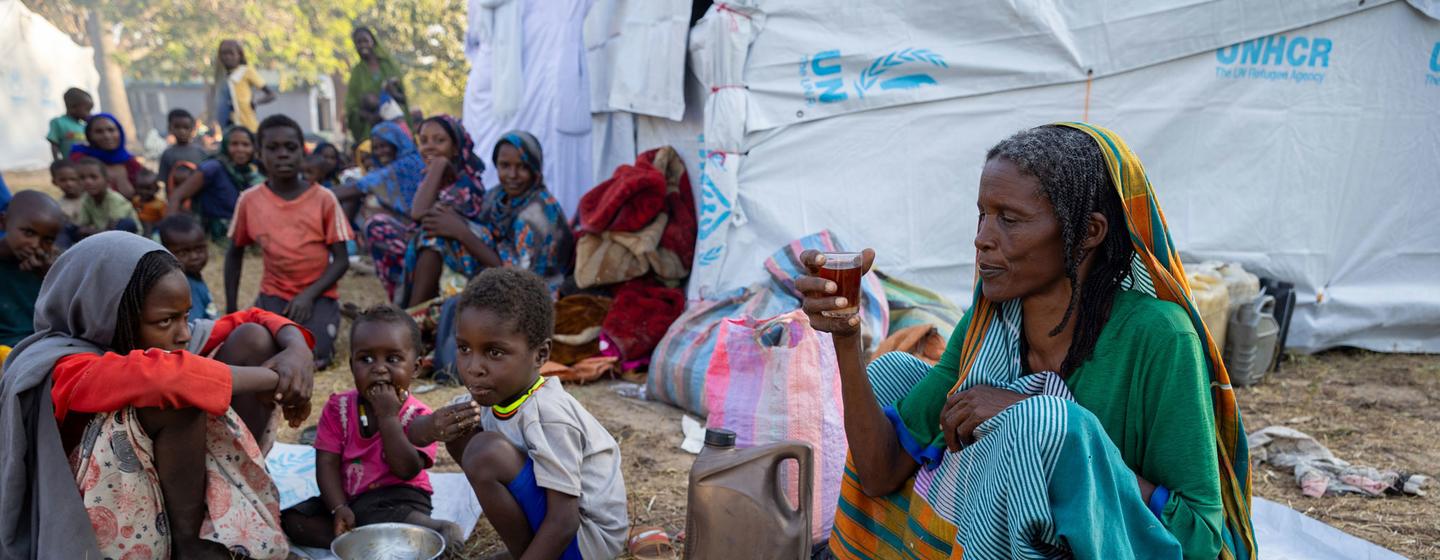Sudan Faces Escalating Humanitarian Crisis Amid Conflict
Sudan is enduring one of the world's worst humanitarian emergencies, with millions displaced, famine looming, and civilians targeted amid ongoing war between rival armed factions.

Sudan’s humanitarian crisis has deepened dramatically as the war between the Sudanese Army and the paramilitary Rapid Support Forces (RSF) enters its third year, triggering mass displacement, famine, and widespread violence. The United Nations estimates that over 12 million people have fled their homes, and up to 150,000 have been killed since fighting erupted in April 2023, following a failed transition to civilian rule after the ousting of dictator Omar al-Bashir. Humanitarian organizations warn that 30 million Sudanese now require urgent assistance, making this the world’s largest internal displacement crisis.
Basic infrastructure has collapsed in many regions, with hospitals, schools, and homes destroyed. Famine threatens 25 million people, and nearly 680,000 are in catastrophic food insecurity. The situation is compounded by outbreaks of cholera and other diseases, especially in besieged cities like El Fasher, where civilians are trapped and aid convoys have been repeatedly attacked. In August 2025, a drone strike on a UN food convoy in North Darfur further hampered relief efforts, while ongoing shelling and targeted attacks continue to kill and injure civilians.
Civilians Under Siege and Targeted Violence
Reports from independent human rights monitors and UN fact-finding missions confirm systematic atrocities against civilians. Both sides of the conflict stand accused of war crimes, including rape, torture, and ethnically targeted executions. The RSF’s recent shelling of Al Fasher killed at least 24 people and wounded 55, with mortar fire striking densely populated areas. In Darfur, attacks have included the abduction of displaced men and ethnically motivated killings, raising fears of genocide. Humanitarian workers are also at risk; more than 84 have been killed since the war began, and many others have been detained arbitrarily.
International observers note that both warring factions deploy propaganda to justify their actions, often using emotional appeals and blaming the other side for atrocities. State-controlled media in Sudan and allied authoritarian countries tend to downplay civilian suffering and exaggerate military successes, while independent outlets and photojournalists document the stark realities of displacement and violence.
Overlapping Disasters and Aid Challenges
Sudan’s crisis is compounded by natural disasters, such as the August 2025 landslide in Tarasin village, West Darfur, which killed hundreds and left survivors without shelter or medical care. Heavy rains and flooding have displaced thousands more, exposing them to health and protection risks. The Marra Mountains, often used as refuge during fighting, remain inaccessible for rescue teams due to insecurity and logistical constraints.
Humanitarian agencies require $4.2 billion in 2025 to deliver life-saving aid to nearly 21 million of the most vulnerable Sudanese. Yet, funding is falling short as global crises multiply, and insecurity restricts access to besieged areas. The UN and Pope Leo XIV have issued urgent appeals for international support, warning that without immediate action, Sudan faces a catastrophic escalation in famine and violence.
International Response and Sudanese Resilience
Neighboring countries are overwhelmed by the influx of refugees, straining regional stability. Despite the devastation, photojournalists and aid workers highlight stories of courage and survival among Sudan’s displaced, who continue to persevere in the face of adversity. As the world’s attention shifts elsewhere, Sudan’s crisis remains largely in the shadows, with millions suffering and little prospect of peace in sight.